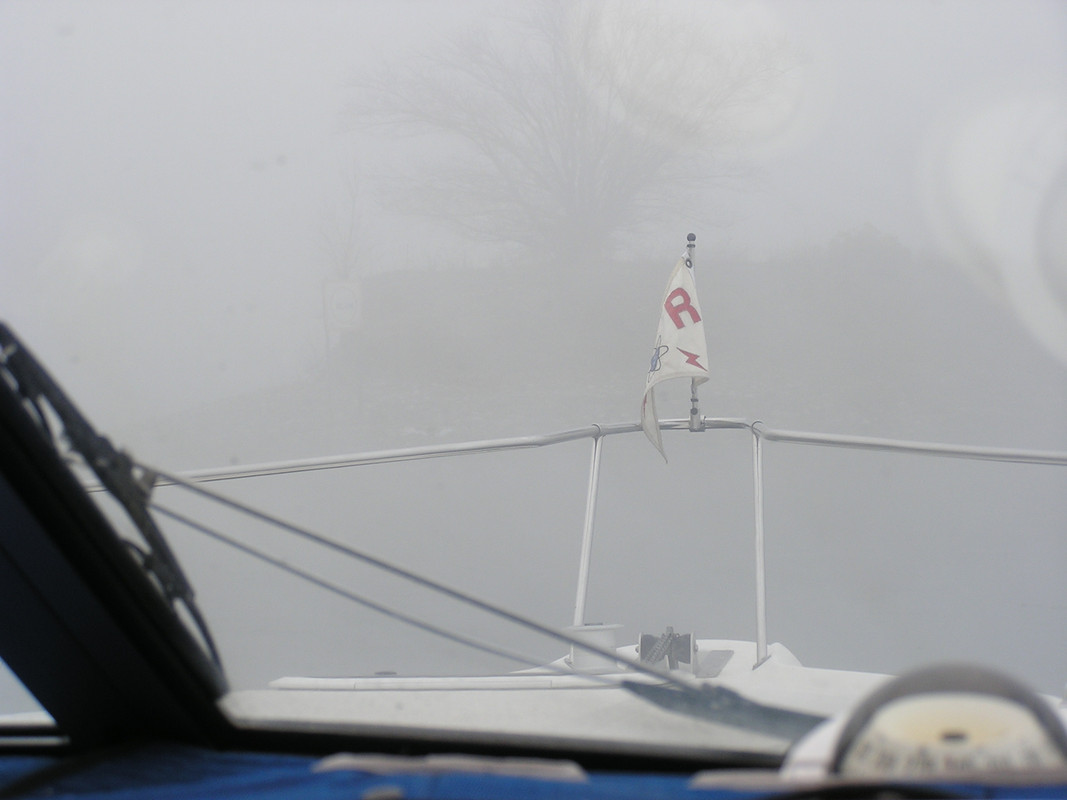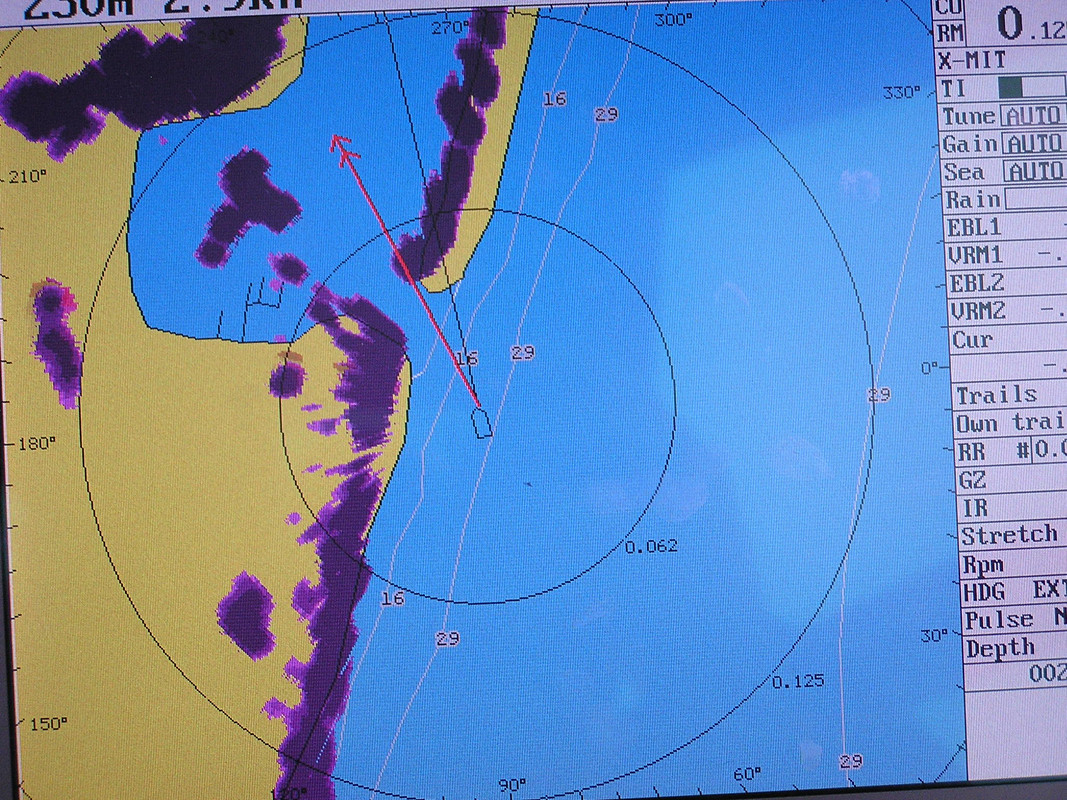Fog is funny, and very easy to get disoriented. It took many hours and many outings for me to get 'comfortable' (if there is such a thing) in fog. Not having had auto-pilot (just had it installed this month...Woohoo), all my learning and hours of experience was by hand steering through fog. If I could give anyone any one piece of advise it's that the compass is MANDATORY for operating in fog. To me, if I had to list the priority of tools needed to easily and effectively navigate in fog, it would be:
1) GPS
2) Compass
3) Radar
I also find that, unless your GPS has an internal compass, you really need to go faster than headway speed to get the GPS to show an accurate course. I used to have to do around 6-8 knots to get the GPS to lock into an accurate course. I'm hoping that with auot-pilot and an electronic compass, that becomes more accurate for me.



